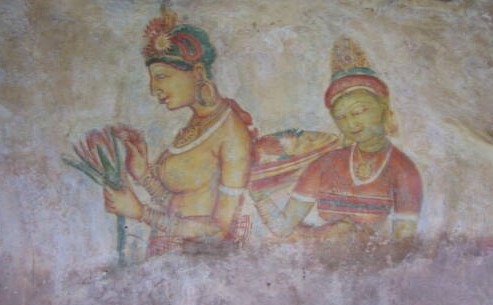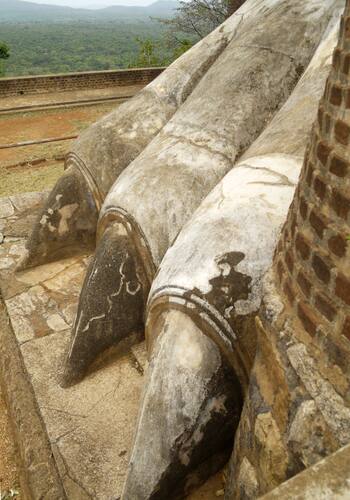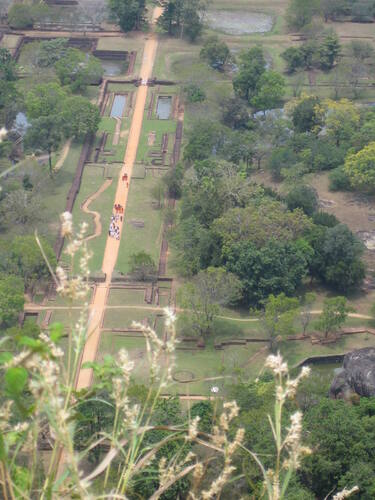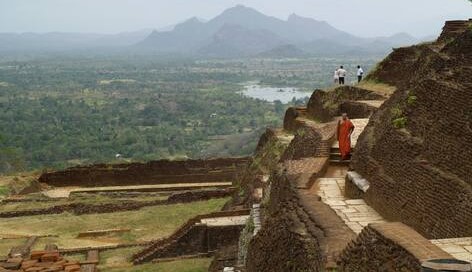History
The rock plateau known as Sigiriya is an extinct volcano 200 meters higher up than its surrounding jungles. It is 370 meter above sea level between the towns of Dambulla and Habarane.
Sigiriya and its surrounding areas had inhabitants for more than 4000 years. Starting the 3rd century BCE, it was used as a monastery. In the 5th century CE, it was turned into a palace when King Kasyapa (477-495 CE) illegally took his place as king from Maggallana, his brother and the rightful heir to the throne. While Maggallana fled to India in fear of his life, Kasyapa built the royal palace at Sigiriya using some of the most advanced architectural and artistic techniques. In battle, Maggallana's army killed his brother and then destroyed the palace his brother had built. After this, Sigiriya went back to being a Buddhist monastery until the 14th century CE, after which the monks abandoned it.
Sigiriya was not discovered until 1831, when it was accidentally found by the British army. Excavations show that many pieces of the site are still intact and unaltered.
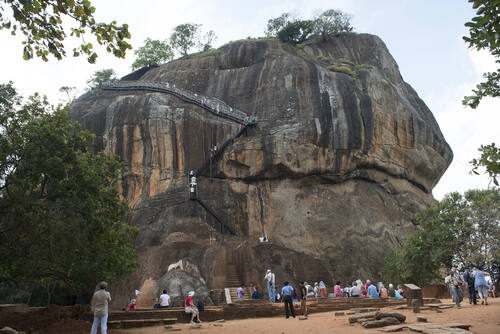
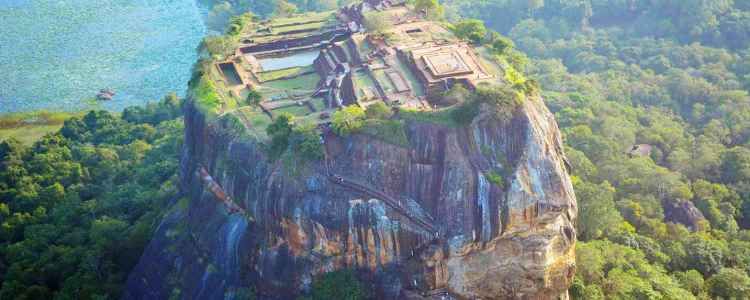
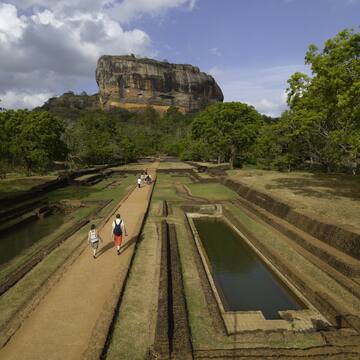
The Fortress
Locals of Sri Lanka will refer to Sigiriya as the Eighth Wonder of the World. It has remnants of a ruined palace with an extensive network of fortifications, vast gardens, ponds, canals, alleys and fountains. The northern side of the rock is the main entrance that is in the form of a lion - only the feet have survived; the roots back to the site's name as Sigiriya originates from " Sihagri " meaning Lion Rock.
The western wall has some remaining frescos from when Kasyapa built his palace. They compose nude females who were probably Kasyapa's wives and concubines or priestess. Although the figures painted are unknown, the fresco celebrate female beauty.
A striking feature of Sigiriya is its mirror wall. In olden days, metals were polished heavily until a reflection could be seen before they were used as mirrors. This was for the King and it had inscriptions, some which were poems written by visitors; the earliest inscription could be dates back to the 8th century CE.
